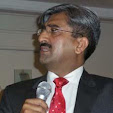ARMED conflict has a number of repercussions for children. However, these can be broadly divided into two categories, both of which apply to children in Pakistan.
The first consists of children from communities affected by armed conflict as a result of direct hostilities against them and their families. These children see their schools targeted, they are often displaced because of the conflict. Some lose contact with their families and others are orphaned. Then, there are children used as soldiers or suicide bombers.
This year alone has seen, among other incidents, the kidnapping of 27 children from Bajaur Agency by Afghan Taliban, the attack by the Tehrik-i-Taliban (TTP) on a school van near Peshawar killing five children, the death of a child in Karachi following a blast targeting the house of the chief of the CID`s anti-terror force.
The Taliban have set conditions for freeing the Bajaur children and demanded that the government release those languishing in various prisons, stop instigating tribesmen to form anti-Taliban lashkars and disband such `peace committees` in Bajaur. The Peshawar attack was termed a lesson for the concerned village that had formed a lashkar to fight the Taliban. Although it has been months since the kidnapping of the Bajaur boys, no concrete steps have been taken by the government for their release. While some of the boys have escaped, a number of helpless parents still await the return of their sons. In the past, incidents such as these would have been settled by local tribal leaders on both sides of the border. However, the ongoing conflict has seen the murder of a prominent Mamond tribal leader from Bajaur who crossed the border to visit his relatives. Not many dare to cross the border now.
In a situation where the government and military are backing private lashkars in the fight against the Taliban, they should also be able to support local communities and tribes in material terms, as they are being brought into direct conflict with the terrorists. Why have the Mamonds in Bajaur been left alone when their children have been kidnapped as punishment for siding with the government?
Similarly, a number of children have been arrested in the past few years as a result of the so-called war on terror and are in different prisons of the country, and even in Afghanistan. One case is that of 14-year-old Hameedullah Khan who was picked up in July 2008 and handed over to the Americans as a terrorist according to an international NGO Reprieve.
Khan is in the US military prison in Bagram, Afghanistan. Geneva Convention IV guarantees special care for children, but it is Additional Protocol I that lays down the principle of special protection: “Children shall be the object of special respect and shall be protected against any form of indecent assault. The parties to the conflict shall provide them with the care and aid they require, whether because of their age or for any other reason.” This principle also applies to non-international armed conflict.
The Optional Protocol to the Convention on the Rights of the Child, on the involvement of children in armed conflict, adopted on May 25, 2000, generally strengthens protection for children in armed conflict. It states that the state parties must take all feasible measures to ensure that members of their armed forces who have not reached the age of 18 years do not take direct part in hostilities.
It prohibits compulsory recruitment into the armed forces of persons under 18 and directs that armed groups, distinct from the national armed forces, should not, under any circumstances, recruit or use in hostilities those under 18, and that governments must take legal measures to prohibit and criminalise such practices. Pakistan has signed but has still to ratify the optional protocol on the involvement of children in armed conflict.
Although children are being recruited by armed groups and are also being used as suicide bombers, there is no visible action on the part of the government or concerned NGOs to tackle the issue despite the fact that rehabilitation of child soldiers is part of the national plan of action for children.
The issue of child soldiers needs to be tackled skilfully, taking into account the contributing factors of how children are lured into such a dangerous game. Both the government and NGOs should devise their strategies to protect children who are being used. The government should enact legislation to outlaw the recruitment/membership of children by armed groups and penalise those who facilitate such recruitment/membership.
A rehabilitation programme should also be started for detained child soldiers and include those who were sent to Afghanistan in the past to take part in the war against the US. NGOs should focus their energies on raising awareness about the negative impact on children of their use as soldiers.
Furthermore, there must be training programmes for officials of the armed forces and law-enforcement agencies on national and international legal instruments concerning the protection of children in armed conflicts. Free and compulsory primary education is yet another effective method to prevent the menace in future on a sustainable basis.
Finally, efforts should also be made for the rehabilitation and reintegration into society of those children directly affected by the armed conflict, who have lost family members. These should include child-headed households. Meanwhile, the safe and early release of children kidnapped by the Afghan Taliban should be prioritised and both federal and provincial governments should use their influence and clout in this regard.
The writer is executive director of the Society for the Protection of the Rights of the Child.
Published in Daily Dawn on December 28, 2011
http://www.dawn.com/2011/12/28/children-in-conflict.html
Wednesday, December 28, 2011
Subscribe to:
Post Comments (Atom)

No comments:
Post a Comment